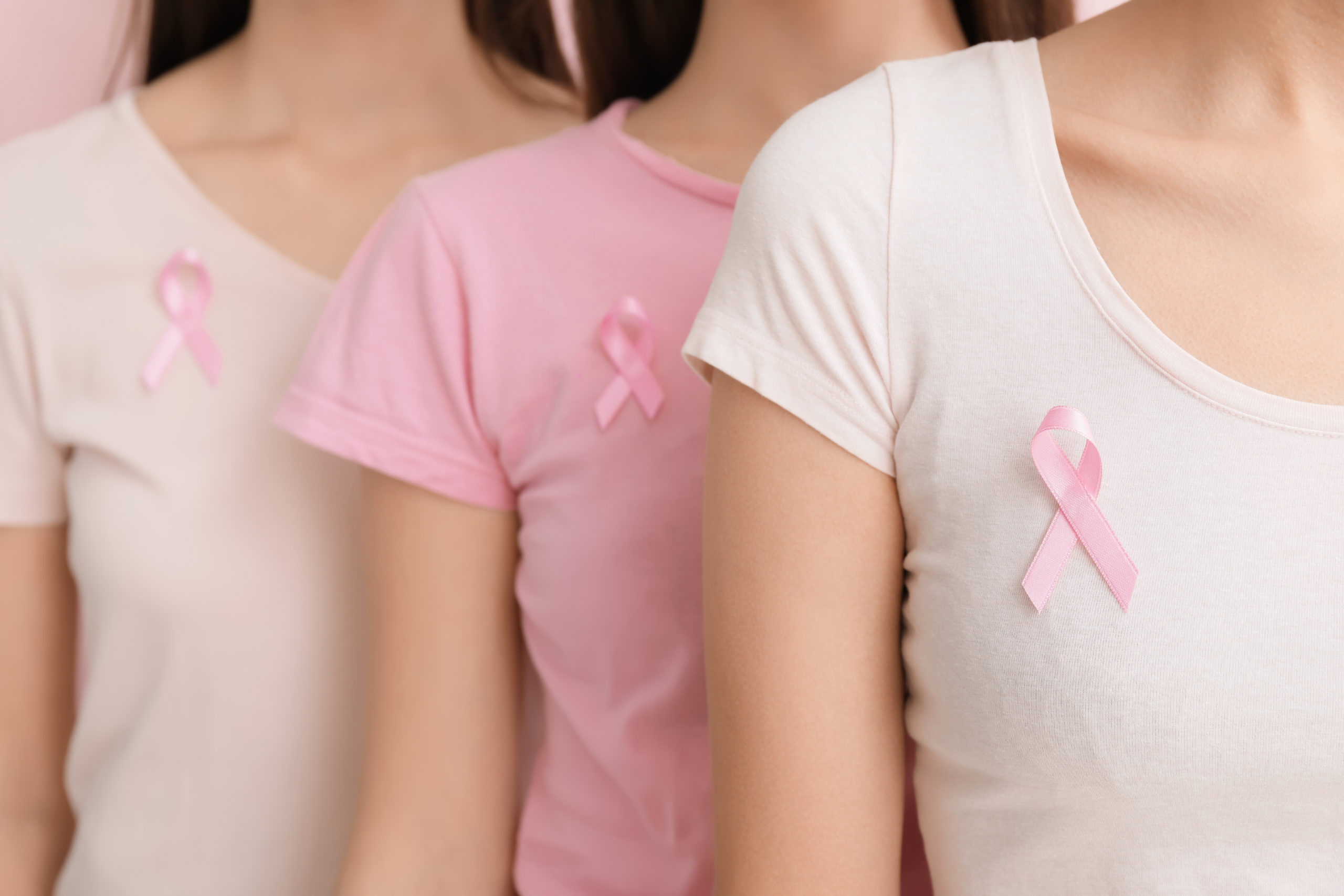October is Breast Cancer Awareness Month!
One in eight women will be diagnosed with breast cancer in their lifetime, so chances are, this cancer has unfortunately affected each of us in some way. BCAM is a time for women to gather information, share their stories, and literally take health into their own hands with self-examination.
In honor of the 1.38 million new cases annually and in memory of the 458,000 deaths each year, we’re encouraging women everywhere to monitor their bodies closely for signs and symptoms of breast cancer. And to all of the breast cancer survivors in our community, we wear pink this October for you!
Risk Factors
There are many different types of breast cancer, depending on which cells are affected, and the risk factors can vary. Unchangeable factors like your sex, ethnicity, age, genetics, or family history can all play a part, but it’s better to focus on the things we can control, like our lifestyle choices.
Three common lifestyle-related breast cancer risk factors include:
- Alcohol is linked to an increased risk of breast cancer. Women who drink one alcoholic beverage on average daily have a small increased risk (7-10%) compared to people who have zero, and women who have two to three drinks a day have about a 20% higher risk than others.
- Being overweight or obese can also increase your risk of many cancers, including breast cancer. When the ovaries stop producing estrogen after menopause, most women’s estrogen is derived from fat tissue. Therefore, having more fat tissue post-menopause can raise estrogen levels and increase your chance of developing breast cancer.
- Studies have found that women who have used birth control have a slightly higher risk of breast cancer than those who have never used it. This is likely due to the hormones most forms of birth control release, which in theory, fuels breast cancer growth over time.
Other possible lifestyle risk factors include hormone therapy, not getting enough physical activity, or not having children. For more information on the risk factors of breast cancer, visit the American Cancer Society website.
Signs and Symptoms
If you notice any of the following signs, make an appointment with your doctor as soon as possible.
Symptom may include:
- General pain
- Skin changes, such as swelling, redness, or other visible differences in one or both breasts
- Increase in size or shape of breasts
- Changes in the appearance of nipples
- Lumps or nodes felt on or inside the breast
Although some women experience symptoms, the best course of action for catching breast cancer in its beginning, most treatable stages, is through early detection.
Famous news anchor, Giuliana Rancic, is one of the many breast cancer survivors who are vocal about her journey and the importance of staying diligent with your health.
“I thought, if this can happen to me, this can happen to anyone. I thought how all these women my age, younger, older, watch me on TV every night and if just one woman goes and does a self-check, or gets a mammogram and finds her breast cancer early, wouldn’t that be incredible?” Said Rancic.
Self-exams and Screening
Fortunately, mortality rates due to breast cancer are decreasing, and self-exams are partially to thank. Doctors recommend examining your breasts at least once a month, but the more frequent, the better. As a woman, it’s essential to be accustomed to how your breasts look and feel, so you can recognize any changes. For a detailed guide on how to self-examine your breasts, click here.
Along with self-exams, the most important thing you can do to detect breast cancer early is to get a mammogram. A mammogram is a low-energy X-ray that screens the breast for abnormalities and signs of cancer and can detect tumors before they can be felt.
There are two types of mammograms:
- Screening mammogram: This kind looks for signs of breast cancer in women who don’t have any symptoms or breast-related issues. Multiple X-rays are taken from different angles on each breast.
- Diagnostic mammogram: This type is used to look at a woman’s breast if she has been experiencing symptoms or if changes are seen on the screening mammogram. These X-rays show additional views that aren’t included in a standard screening mammogram.
The ACA recommends the following guidelines for receiving mammograms:
- Women ages 30-40 with a family history: consult your healthcare provider about the advisable age to start getting them
- Women ages 44-55: every year
- Women ages 55+: every other year
Is it time for you to get a mammogram? BCAM is the perfect opportunity to schedule an appointment!
Support
If you or a loved one have been diagnosed with breast cancer, support is available. The American Cancer Society offers online resources for finding local support groups in your area. You are not alone, and Tulsa ER & Hospital supports the fighters and admires the survivors in the Alexandria community.
Keep the conversation going this October! Share this article with the women in your life to raise awareness of the proactive measures they can take against breast cancer!




Comments are closed